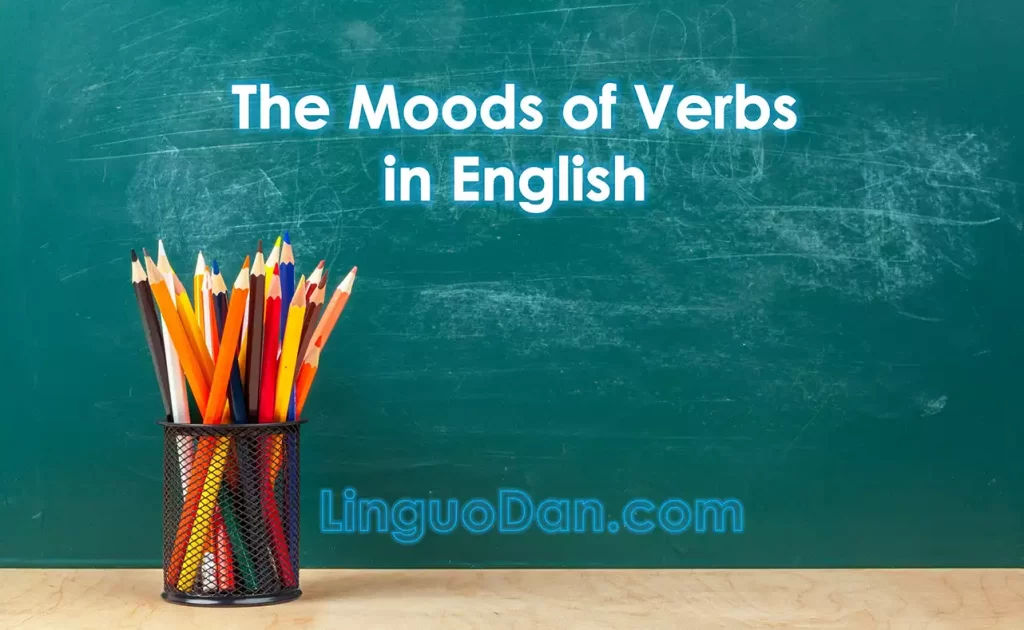The Moods of Verbs in English Language

Understanding Verb Moods
Mood of a verb in English is a grammatical category of a verb that indicates the speaker’s attitude to the action expressed by the verb. The mode of the verb determines whether the speaker considers the action real, desirable, doubts its possibility, or considers it conditional or unrealistic. In the English language, there are three verb moods: Indicative Mood, Imperative Mood, and Subjunctive Mood. Each method has its own peculiarities of use and form, which are used depending on what relation the speaker wants to express to the action. Verb moods, also known as modalities, are a grammatical feature used to express the attitude or the manner in which the action of the verb is presented. In English, verb moods reflect the speaker’s perspective on the likelihood, necessity, or desirability of an event or action. They provide vital contextual information, enabling us to understand and convey complex ideas with ease. In the following sections, we will delve into each verb mood and explore its unique characteristics, usage, and examples.
The Indicative Mood
The indicative mood is the most common and straightforward verb mood in English. It is used to make statements, ask questions, and express opinions, factual information, or objective reality. The Indicative Mood refers to the past, present or future tense.
Features of the Indicative Mood
Statements and Facts: The indicative mood is employed for making factual statements about events, actions, or states
- Example: She opens the window every morning to let in some fresh air
Questions: The indicative mood is also used to ask questions related to objective reality
- Example: Are you attending the meeting tomorrow?
Opinions: In addition, the indicative mood may be used to express opinions or beliefs
- Example: I think the book is captivating and informative.
The Imperative Mood
The imperative mood is used to issue commands, make requests, offer advice, or give instructions. It often implies a direct or indirect sense of authority or urgency on the part of the speaker.
Features of the Imperative Mood
Commands: The imperative mood is frequently used to give orders, commands, or instructions
- Example: Close the door, please
Requests: It may also be employed to make polite requests or suggestions
- Example: Could you pass the salt, please?
Advice: The imperative mood can also offer advice or recommendations
- Example: Don’t waste your time on petty arguments.
The Subjunctive Mood
The subjunctive mood can be considered the most complex and versatile verb mood in English. It is used to express hypothetical situations, counterfactual statements, wishes, desires, doubts, and advice.
Features of the Subjunctive Mood
Hypothetical Situations: The subjunctive mood is used to convey events that are hypothetical or uncertain in nature
- Example: If she were here, she would know what to do
Counterfactual Statements: It can also express counterfactual or contradictory ideas, often using “if” or “unless” clauses.
- Example: If I had known about the party, I would have attended
Wishes and Desires: The subjunctive mood may convey wishes, desires, or preferences
- Example: I wish I could travel around the world
Doubts and Uncertainty: It can also depict doubt or uncertainty about an event or situation
- Example: It’s essential that he arrive on time
Advice: The subjunctive mood may serve as a means to provide advice or make recommendations
- Example: I suggest that she take a break from work.
Table of comparisons between the three modes of the verb
| Mode of the verb | Description | Example |
|---|---|---|
| Indicative Mood | It is used to express valid facts and conditions |
|
| Imperative Mood | It is used to express orders, requests, or appeals |
|
| Subjunctive Mood | It is used to express unrealistic situations, wishes, doubts and conditions |
|
In conclusion, the three verb moods – indicative, imperative, and subjunctive – play a pivotal role in the English language. They enable us to convey our thoughts, ideas, and emotions with precision and variety. A firm grasp of these verb moods will undoubtedly improve our written and spoken communication, as well as enhance our understanding of the intricacies of the English language. It’s important to practice and familiarize oneself with the various verb moods in English to communicate effectively and accurately.